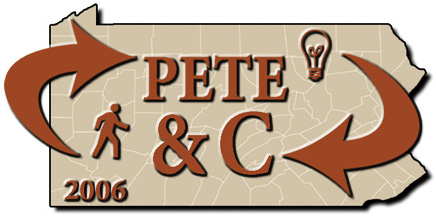 I should have written about this earlier in the week. But it’s been one of those times where your struggling just to be ready for tomorrow. Tomorrow, I’ll be teaching a workshop for education technology leaders (Tech directors) throughout Pennsylvania, as one of the preconference workshops at PETE & C. The topic will be Web 2.0 (Changing Shape of Information), but our focus will be on the potentials of using new web techniques as a way for structuring management and change networks within a school district and across the state.
I should have written about this earlier in the week. But it’s been one of those times where your struggling just to be ready for tomorrow. Tomorrow, I’ll be teaching a workshop for education technology leaders (Tech directors) throughout Pennsylvania, as one of the preconference workshops at PETE & C. The topic will be Web 2.0 (Changing Shape of Information), but our focus will be on the potentials of using new web techniques as a way for structuring management and change networks within a school district and across the state.
So what do you think? How might we use tagging to form specified conversations among specified audiences such that the conversation can adapt to changes in conditions — so that the conversation can grow beyond the group when needed and close down to the group when appropriate? What part would tools like flickr and del.icio.us play in such a network? What might be the advantages of using blogs and wikis for community over a traditional portal?
[if you decide to blog about this, tag the blog with PETEandC and warlick]
It’s going to be a interesting conference. I’ll also be there on Monday, but not delivering any presentations. I’ll just be a fly on the wall, blogging and podcasting if I can. I did a scan of the session program and the word blog was mentioned 26 times and podcast 26 times. But RSS was mentioned zero times. Progress continues.

I think the public nature of del.icio.us limits some of its functionality in the classroom. I would like to see it have options like an old bookmarking tool, Backflip, that controls privacy. It allows you to invite people to add items to specific folders in your collection. They can then post sites and comments on sites with you. You can also make this collection public to anyone who comes to Backflip or you can restrict it to just those you have invited.
I can see a teacher assigning a research project on a topic. She seeds the Backflip folder with a few references and then turns it over to the students. They can add new sites, comment on hers and each others without parents worrying that someone in cyberspace is watching their child.